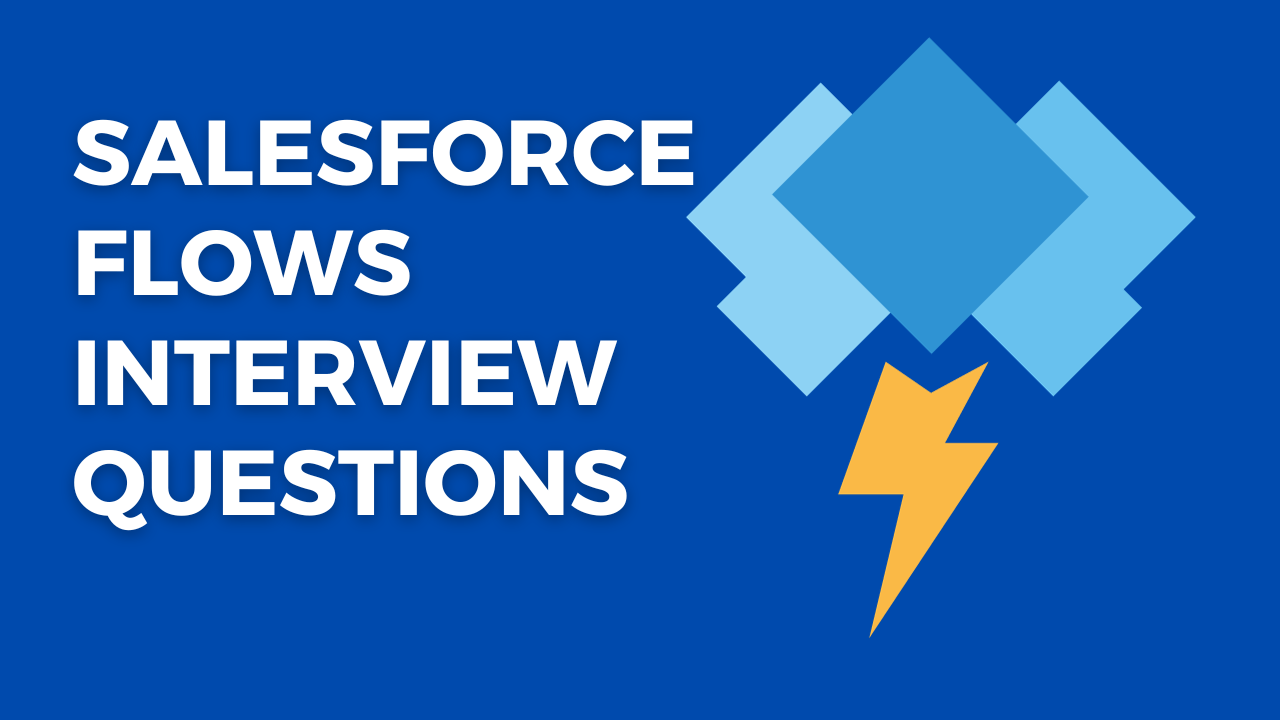Top salesforce flow interview questions salesforce knowledge for 2023 – 24
Q1: What Is Salesforce Flow?
Salesforce Flow, as an automation tool within the Salesforce ecosystem, empowers users to collect data and execute actions in their Salesforce organization or external systems. Flow Builder is the primary tool for creating Flows.
Q2: What Are the Core Components of a Flow?
A Flow comprises several key components:
- Elements: These serve as the foundational building blocks for the Flow, enabling actions like creating records, updating records, decision-making, and displaying screens, among others.
- Resources: Resources encompass variables, constants, formulas, and sObjects responsible for storing and manipulating data within the Flow.
- Connectors: These define the pathways connecting various elements within the Flow.
Q3: What Are the Different Types of Salesforce Flows?
Salesforce offers three primary types of Flows:
- Screen Flows: Designed to guide users through business processes and capture user input.
- Autolaunched Flows: These run in the background and lack a specific trigger.
- Autolaunched Flow (No Trigger): Initiated through methods like Apex, processes, REST API, and more.
- Triggered Flows: Automatically initiated by a user-defined trigger, running in the background.
- Record-Triggered Flow: Launches when a record is created, updated, or deleted.
- Schedule-Triggered Flow: Commences at specified intervals for each record in a batch.
- Platform Event-Triggered Flow: Initiates upon receiving a platform message.
Q4: List Various Flow Distribution Methods.
Flows can be distributed to users through various methods, including:
- Flow actions
- Lightning pages
- Experience Builder pages
- Custom Aura components
- Custom Lightning web components
- Custom buttons or custom links
- Flow Orchestrator (Beta)
- Web tabs
- Direct flow URLs
- Visualforce pages
- Lightning Out
- Embedded Service deployments
Q5: What Are the Key Building Blocks of Flows?
The primary building blocks of Flows include:
- Elements: These represent the actionable steps within a Flow, such as displaying information, collecting user data, or executing specific operations.
- Connectors: Connectors define the available pathways that the Flow can follow during execution.
- Resources: Resources refer to values that can be referenced throughout the Flow to store and manipulate data.
Q6: Explain Record Triggered Flow.
A Record Triggered Flow automatically launches when a record is created or updated, operating in the background without requiring user interaction. It offers advanced capabilities and can serve as a replacement for Workflow Rules in many scenarios.
Q7: How Can You Debug and Test a Flow in Salesforce?
Debugging and testing a Flow can be accomplished through the following methods:
- Use the Debug feature to execute the Flow step by step, inspect variable values, and troubleshoot issues.
- Leverage Debug Logs to access detailed information regarding the Flow’s execution.
- Create test records and scenarios in a Salesforce sandbox environment to conduct comprehensive testing.
Q8: What Are Best Practices for Designing Efficient Flows in Salesforce?
To design efficient Flows in Salesforce, consider these best practices:
- Minimize the number of record updates in a Flow to avoid exceeding DML (Data Manipulation Language) limits.
- Utilize bulk-safe actions for efficient processing of multiple records.
- Whenever possible, avoid using loops, as they can consume significant resources.
- Employ subflows to break down complex Flows into modular and reusable components.
- Thoroughly document your Flows for future reference and ease of maintenance.
These questions and answers should help you prepare for a Salesforce Flow interview. However, remember that interview questions can vary in complexity, so it’s essential to have a solid understanding of the topic and be prepared to discuss your practical experience with Salesforce Flow. Therefore, click here to access Salesforce flow online course with practical examples
